Fractional ownership means you can invest in square feet in the high-value assets that would otherwise be out of your reach and, as a result, enjoy the returns. This approach allows people with limited budgets, or those who want to spread their investments across different areas, to own a fraction or part of high-value real estate.
How Fractional Ownership Works?
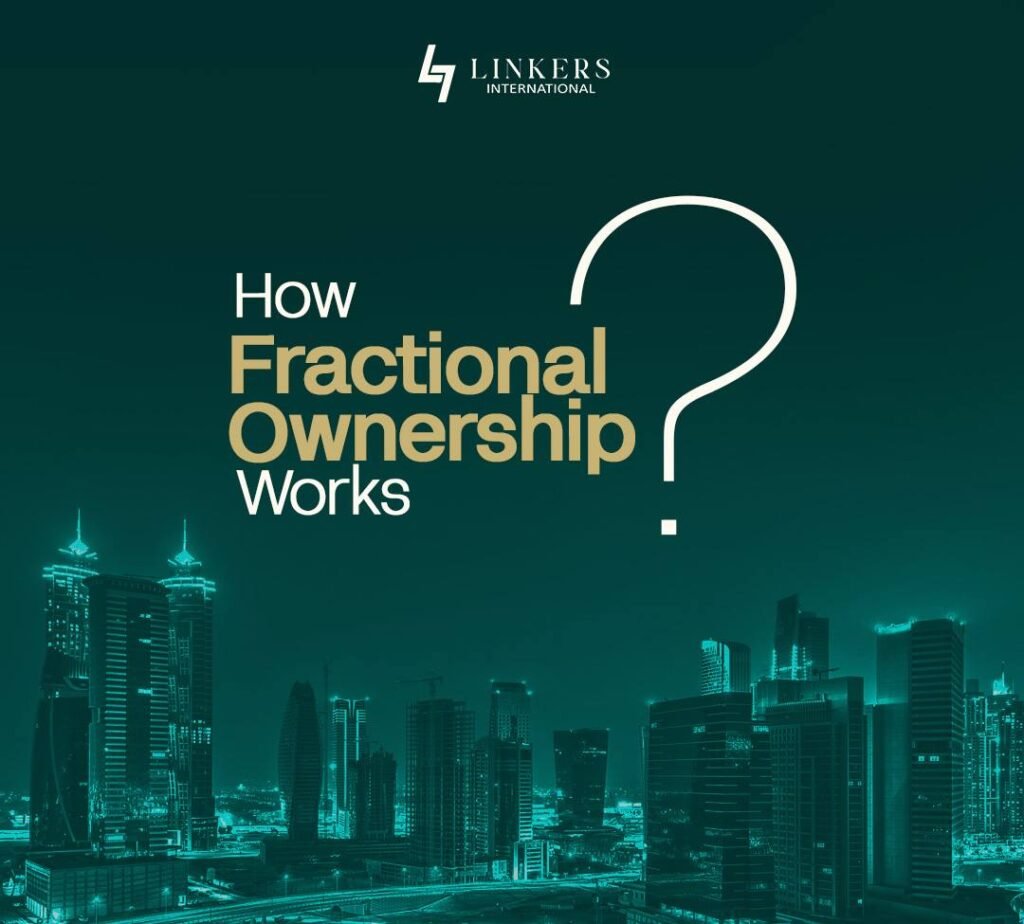
Fractional ownership divides a high-value asset, mentioned above, into smaller, affordable shares that multiple people can invest in. Each investor owns a legal share and has rights to profits, usage, or both, depending on the structure.
Here’s a complete guide for how this model works.
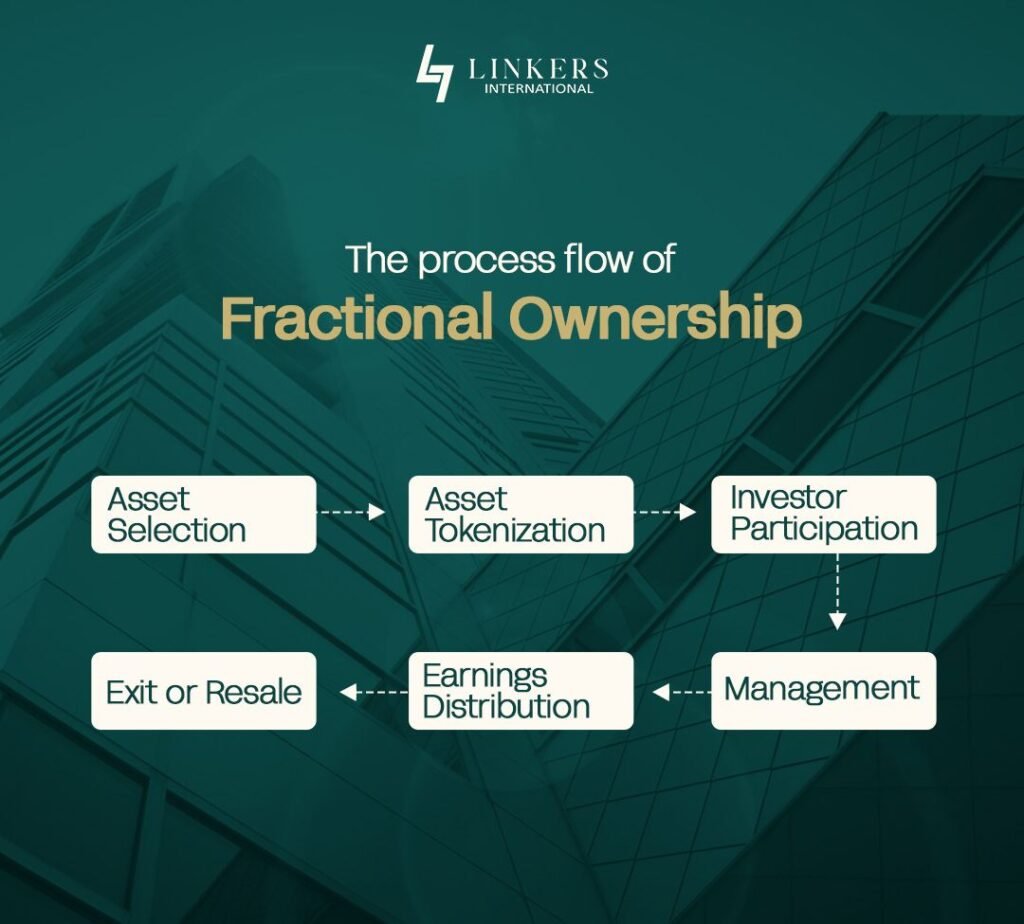
Asset Selection: A platform or developer identifies a high-value asset (e.g., an apartment, office space, or vacation home).
Asset Tokenization or Share Division: The asset is split into fractions. This could be:
- Digital tokens representing ownership (via blockchain platforms like DAO PropTech).
- Legal shares in a Special Purpose Vehicle (SPV) (like a company or LLC).
- Traditional equity share in a project
Investor Participation: Multiple investors buy shares based on their budgets and get a percentage of ownership, income and capital gain when the property is sold.
Management: A third-party manager (often the platform itself) handles rental collection, property maintenance, legal compliance and communication with co-owners.
Earnings Distribution: Revenue from rent or appreciation is divided proportionally among investors, monthly, quarterly, or annually.
Exit or Resale: Investors can exit by selling their shares back to the platform (if offered). They can also share a listing on a secondary marketplace (where allowed) or hold until the property is sold, and receive their profit cut.
How is Fractional Ownership Redefining Asset Investment Globally?
Fractional ownership is redefining how people invest in high-value assets by breaking them into smaller, affordable shares. Companies like Pacaso in the U.S. have streamlined this process by offering fractional shares of vacation homes with full-service management, making second-home ownership more accessible and efficient.
In Europe, similar models are helping reduce the underuse of seasonal properties, ensuring better occupancy and economic utility. This shift is turning real estate from a static, capital-heavy investment into a flexible, income-generating asset class.
Why Is Fractional Ownership A Transparent Path to Property Investment?
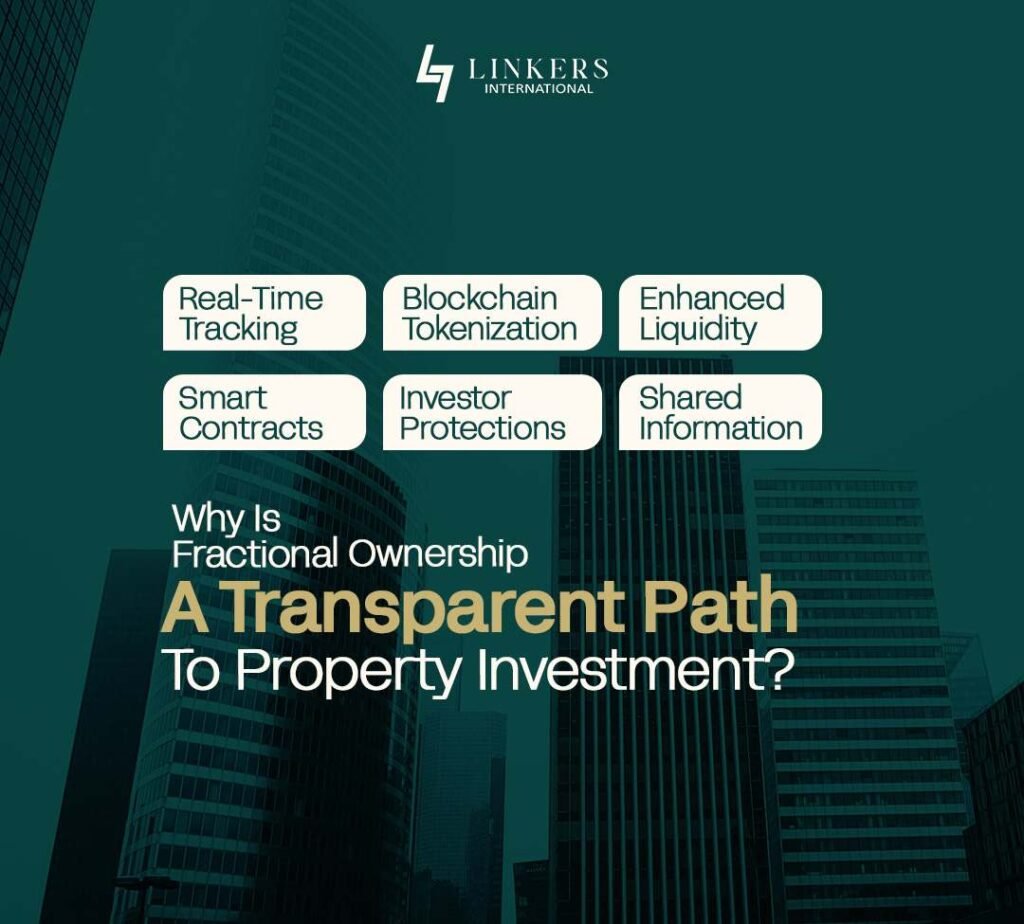
Fractional Ownership also brings liquidity and transparency to markets that were traditionally exclusive and illiquid, often through tokenization and digital platforms.
However, while the model offers clear benefits, it also requires robust regulation and trustworthy management to prevent misuse and protect investors.
Overall, fractional ownership is helping the Democratization of Real Estate by combining access, technology, and shared value.
- Real-Time Tracking: View ownership, returns, and legal details via secure digital dashboards.
- Blockchain Tokenization: Immutable records and transparent transactions ensure clarity.
- Enhanced Liquidity: Trade or exit ownership more easily than traditional property deals.
- Smart Contracts: Automated terms reduce human error and enforce transparency.
- Investor Protections: Potential for regulation and third-party audits.
- Shared Access, Shared Information: Co-owners operate with visibility, not guesswork.
Pros & Cons of Fractional Ownership
Fractional ownership can be an attractive way to access luxury assets at a fraction of the cost, making high-end real estate more attainable. However, understanding both the advantages and limitations is essential before making a well-informed investment decision. Here are the pros and cons of fractional ownership.
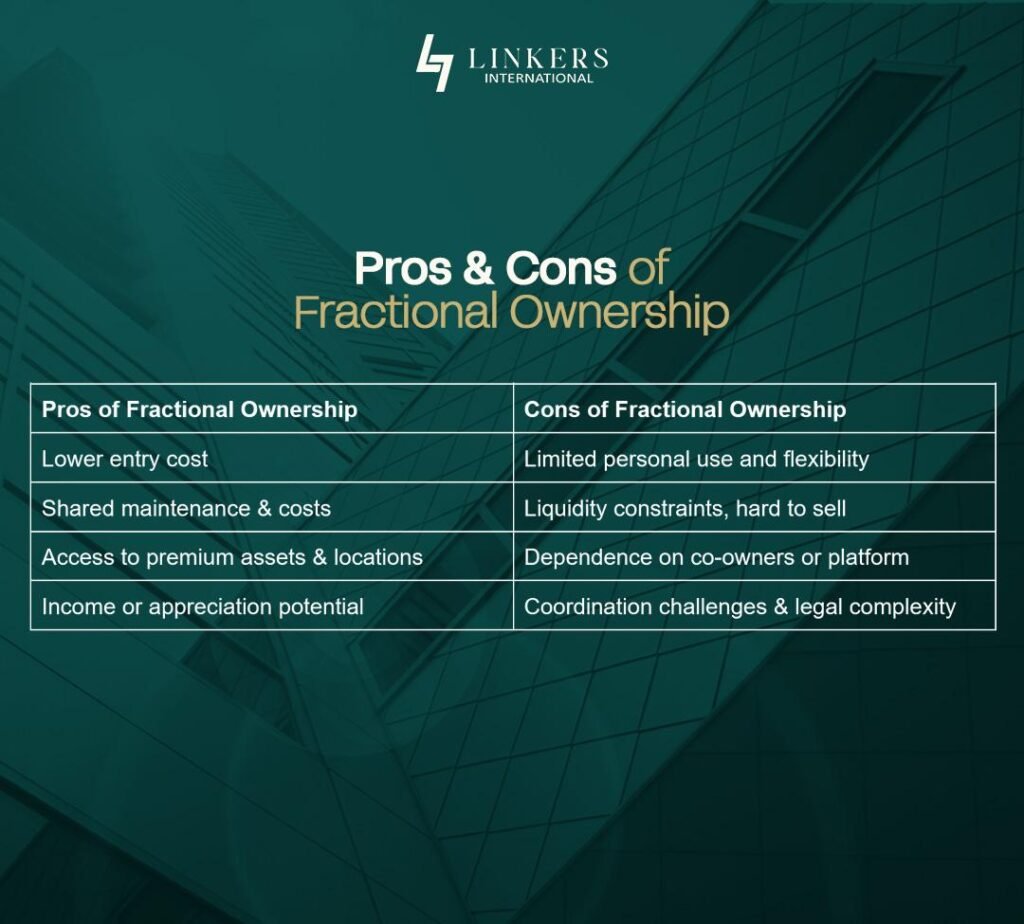
Emergence of Fractional Ownership in Pakistan
In recent years, fractional ownership has started gaining traction in Pakistan, offering a modern solution to the country’s increasingly expensive and opaque real estate market. The adoption of digital platforms and real estate tokenization has opened up new investment opportunities, enabling users to buy fractions of properties with full visibility into performance, pricing, and legal structure.
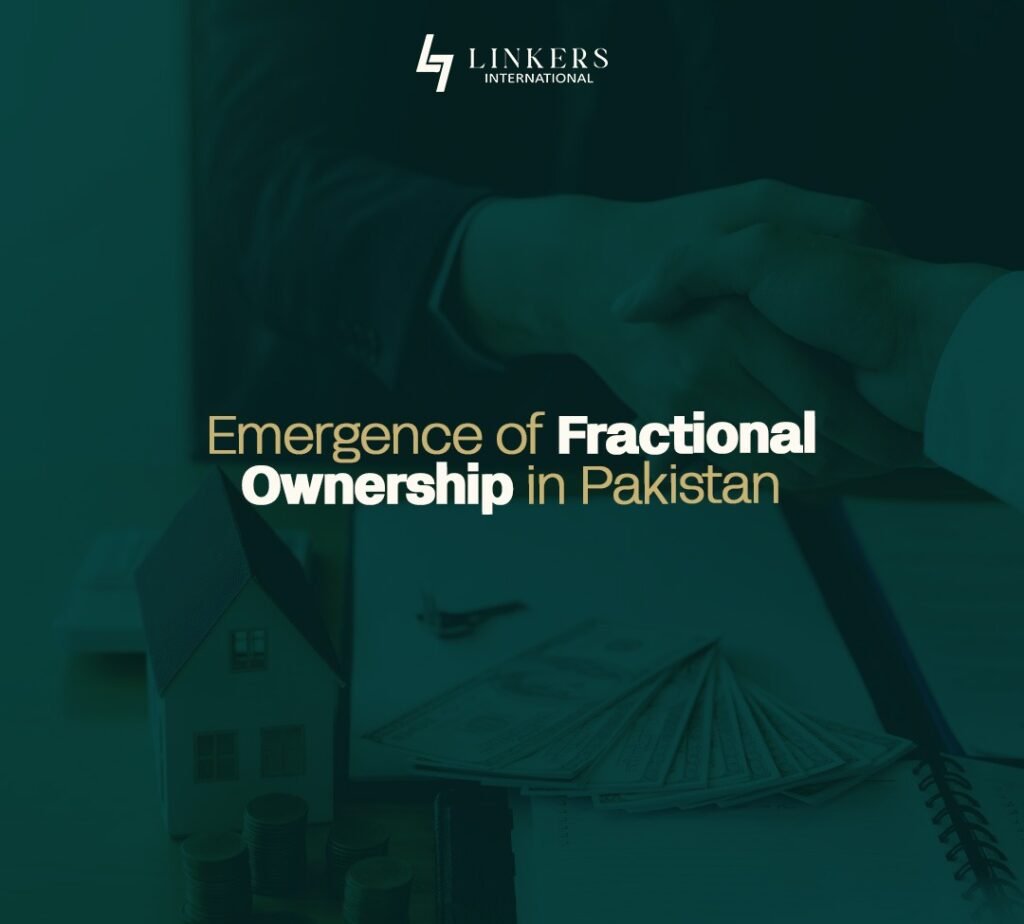
This trend is particularly appealing to younger, tech-savvy investors and overseas Pakistanis seeking safe, diversified investment avenues.
DAO PropTech
DAO PropTech is one of the first platforms in Pakistan to offer real estate investment through blockchain-based fractional ownership. It allows users to invest as little as PKR 50,000 into vetted commercial and residential projects.
Their platform provides real-time dashboards, smart contracts, AI tools, and portfolio insights, making the investment process transparent and data-driven.
DAO PropTech launched its Real World Asset Tokenization Platform at FutureFest 2025, partnering with notable groups like Arif Habib. However, its success still depends on gaining regulatory clarity and maintaining user trust, especially in a market historically plagued by fraud and misinformation.
XState – A Fractional Ownership
One notable example of fractional ownership in Pakistan was Xstate.pk, a proptech platform that aimed to democratize access to high-value real estate through technology. It allowed investors to purchase fractional shares in premium properties, making real estate investment more accessible, especially for younger and middle-income individuals.
Xstate leveraged digital tools to offer greater transparency, legal compliance, and ease of investment, addressing many of the trust issues traditionally associated with the Pakistani real estate market. The platform is currently not active, but it played a significant role in introducing and popularizing the concept of fractional ownership in the country.
How Pakistan Can Harness Fractional Ownership Effectively?
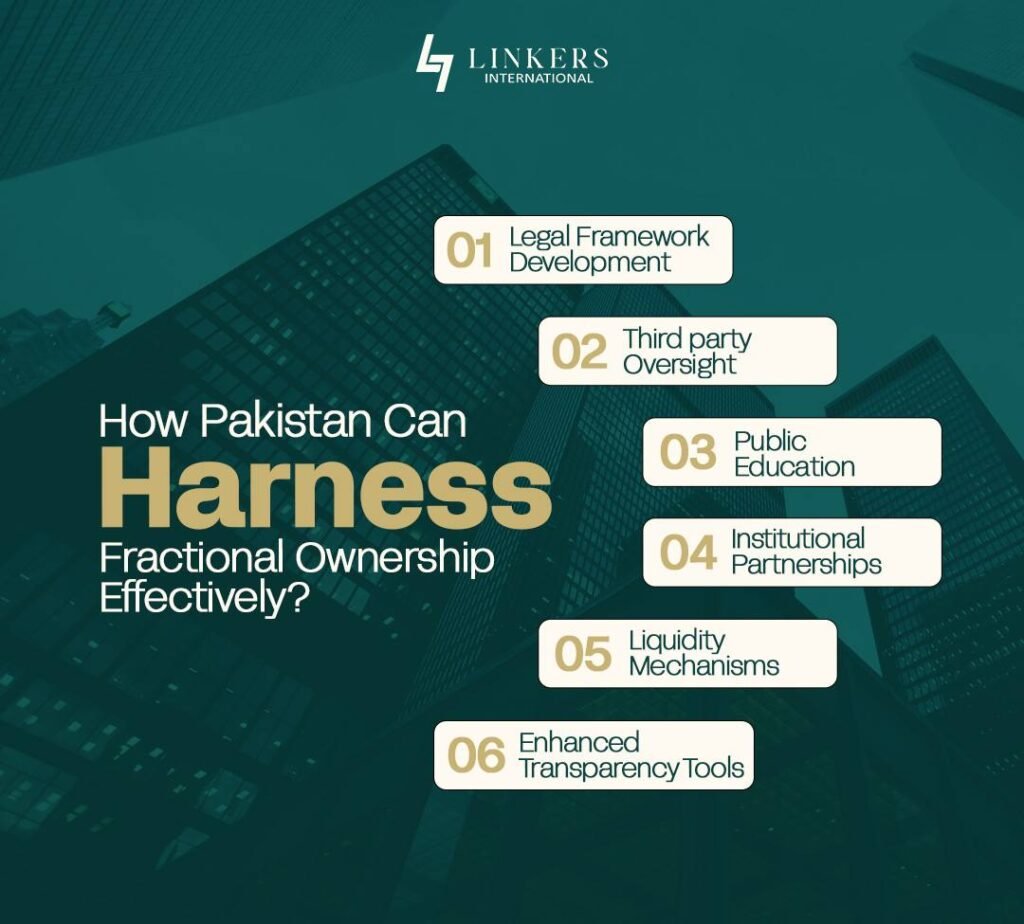
- Legal Framework Development: SECP or federal bodies should formally regulate fractional property assets to ensure investor protection.
- Enhanced Transparency Tools: Blockchain-backed ledgers and smart contracts for immutable records and verification can restore trust.
- Public Education: Outreach campaigns to inform potential investors on risks, rights, and processes.
- Institutional Partnerships: Collaborate with established developers and financial bodies to add credibility.
- Liquidity Mechanisms: Establish secondary markets or regulated exchanges to make selling fractional stakes easier
- Third‑party Oversight: External audits and oversight to safeguard funds and enforce fair operations.
The Takeaway!
Fractional ownership lowers the barrier to entry, allowing individuals to invest with smaller capital while enjoying shared benefits and diversified risk.
In Pakistan, tech-enabled platforms will bring much-needed transparency and trust to the real estate sector, offering a modern alternative to the often opaque and fragmented traditional market. As adoption will grow, fractional ownership will pave the way for more inclusive, secure, and efficient property investment.





